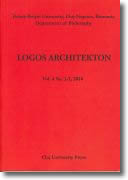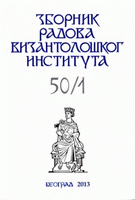We kindly inform you that, as long as the subject affiliation of our 300.000+ articles is in progress, you might get unsufficient or no results on your third level or second level search. In this case, please broaden your search criteria.

Out of their zeal to solve the antediluvian debate between reason and emotion, a group of philosophers have recently started to give much coverage to the role of affect, if there is any, in manipulating our moral judgment, drawing upon and themselves conducting folkpsychological research in the area of moral reasoning. Some of them are acclaimed Sentimentalists. But there are philosophers like Shaun Nichols who are on the lookout of some wherewithal to bridge the gap between reason and emotion. They contend that affect is a prime factor that enables us to distinguish moral norm violations from non-moral violations. Moreover, affect almost imperceptibly shapes the cultural viability of not just moral norms but also non-moral norms that engender abhorrence, if transgressed. The paper aims to capture some of their arguments in support of the hypothesis that affect shapes our ability to make moral appraisal.
More...
The aim of this paper is to explore how the challenge to foundational notions like truth and consistency in mathematics is reflective of a change in our understanding of human rationality. Inflexible boundaries of a strong notion of rationality posit strict parameters, such as, truth-preservation and consistency. We show in this paper that the growing challenge to truth and consistency also reveals a shift from traditional normative understanding of rationality to a notion of a liberal rationality which grants allowance for both normativity and nonnormativity.
More...
In order to find a solution for the paradoxes of material implication, C.I. Lewis introduces a new constant in the vocabulary of propositional logic, namely, the constant named strict implication. This constant has the role to symbolize the relation of deduction between the premises and the conclusion of an inference. Starting from the Aristotle’s analysis of inference, that the conclusion is necessarily deduced from premises, Lewis admits a modal interpretation for the strict implication. But, in this way, although the material implication paradoxes are eliminated, new paradoxes appear, namely, the paradoxes of strict implication. We can avoid this kind of paradoxes, admitting a different analysis of strict implication without a modal component. Strict implication can be reduced to material implication and the quantification of propositional variables.
More...
The Notitiae episcopatuum Ecclesiae Constantinopolitanae nos. 4, 5 and 6 are important sources for the reconstruction of the territorial organization of the Patriarchate of Constantinople in the 9th century. There are different oppinions in the existing scholarly works about precise dating of those notitiae, ranging from the beginning of the 9th century, through the middle of it, up to its end. In this work, we analyse the content of each of the mentioned notitiae and point to certain elements which allow us to date more precisely each of them to the period between 806 and 838.
More...
Starting from the observation that the relations between Phocas and Maleïnoi were not good during the reign of Nicephorus II, given the fact that a) the Maleïnoi did not support Nicephorus Phocas in 963, b) the fi rst revolt against him originated from his close relative Gregory Maleinos and that c) the accession to the throne of Nicephorus II did not mean the subsequent rise in the military hierarchy for the Maleïnoi, we will examine, in this study, the version according to which Eustathius Maleïnos could have been appointed as general of Antioch and Lykandos by John I Tzimiskes.
More...
The great fortress of Antioch, pillar of the Byzantine defense in Syria in the 11th century, was more integrated into the Byzantine Empire than has sometimes been claimed. It can be shown by the letters of the very Constantinopolitan Psellos. He corresponded with several patriarchs of Antioch, who themselves were careful not to cut their ties with the Byzantine capital. Psellos wrote more than once to Aimilianos, which is actually the name of a previously known family. Patriarch Aimilianos probably governed the Church of Antioch longer than we thought. Psellos loved to keep in touch with senior military offi cers, some of them being of imperial blood or related to the imperial family, such as Michel Kontostephanos, a nephew of Isaac Comnenos, or the caesar John, brother of Constantine Doukas. They were for a time stationed in Antioch or in the region. He also wrote to Nicephoros Botaneiates, who was praised during an embassy of the emir of Aleppo at Constantinople. He corresponded with Nicéphoritzes, his former colleague, who was twice duke of Antioch. There is no doubt that the elite of the capital was interested and concerned by the situation in Antioch.
More...
The katholikon of the Hosios Loukas monastery, built around the fi rst quarter of the eleventh century, has a narthex with a mosaic decoration on its west side. The Incredulity of Thomas is included amongst the scenes of the Passion. This paper examines the iconographic, liturgical, and dogmatic roles of the Incredulity within the context of the overall program and the liminal space of the narthex. This monumental representation evidences how depictions of the Incredulity engaged with changing beliefs concerning the senses and faith. In particular, I focus on the implications of the believer’s bi-directional movement through the narthex on entering and exiting the church. Iconographically, the representation of a door behind Christ and His wound are understood as symbolic conformation of His divine nature and a marker of the path believers should follow to attain salvation. As a confi rmation of Christ’s dual nature, the Incredulity of Thomas is read in relation to funerary and Eucharistic contexts as relating to the narthex of Hosios Loukas.
More...
Supported by broader sighting at economic, social and other vital historic structures of Sardis in Early byzantine period, partly by digressions at relevant singularities of the contemporary urban order itself, the paper tries to suggest a new interpretation of economic and other circumstances which in 459. led to signing an agreement between ekdikos and builders of Sardis.
More...
While it is often unclear where court cases were held in the Byzantine provinces, evidence from the Athonite archives for the region of Macedonia suggests the imperial judges heard cases in specifi c ‘assize towns’ and other places as well as in the theme capital of Thessalonike. Based on case-studies from the Athonite archives and using the occurrence of the term kathisma as an indication of the existence of an provincial administrative and judicial centre, it is suggested that regular judicial circuits still took place in the 10th and 11th centuries. The imperial government thus demonstrated its concern for the provision of justice in the provinces in the same way as had its Roman predecessors.
More...
In a new monograph N. Alekseyenko has collected the sigillographic material relevant to the administration of Cherson from the 8th through the 11th century. This volume forms the basis for our reevaluation of the problem of Cherson’s administrative history, especially the matter of a more precise dating of these sources. The 128 seals of Archontes of Cherson come probably from the period ca. 740 to ca. 840. We accept the hypothesis that there was always only one Archon, a kind of mayor in charge of the autonomous town – but in close contact with Byzantium. The small number of seals of Kyroi we prefer to date between ca. 840 to ca. 870, id est in the early years of the new thema Klimata / Cherson; he was subordinate to the Strategos. The 137 seals of the Strategoi of Cherson extend from the middle of the 9th century until nearly the middle of the 11th. Most of them were Protospatharioi. Not long ago the first seal of a Katepano of Cherson and Chazaria (1060/1080) came to light. A single seal type mentions an Ek Prosopou of Cherson (fi rst half of the 10th century). The 74 bullae of Kommerkiarioi stem from the second half of the 9th and 10th centuries. Only two fragments of seals mention Protonotarioi of the Mangana and of Cherson (second to third third of the 10th century). On the other hand there are 3 seals of a Pater Poleos, one type of an Ekdikos and some seals of Proteuontes, all from the 10th century and relating to persons who served as municipal agents.
More...
The Skylla group was among the most famous bronze sculptures installed in the hippodrome at Constantinople. This paper suggests that the Skylla was a feature of Constantinople at its re-foundation, but perhaps originally stood facing the Bosphorus. In around AD 400 it was moved to the hippodrome where it stood until its destruction in 1204, and where it may for some time have served as a fountain.
More...
The paper analyzes the paragraph of the Chronicle of Theophanes the Confessor in which the Byzantine Chronicler describes the contract made between Bulgaria and Byzantium in 716, and above all the mention of the Bulgarian ruler Kormesios in it.
More...
~Odhgo,j (The Guide) is the most famous work of Anastasios of Sinai, the theological writer from the 7th-8th century. It is some sort of a handbook for fighting the heresies, in the first place Monophysitism and Monotheletism. Anastasios is discussing the terms, i.e. the categories, which the believer should use if he wants to be orthodox. In the second chapter Anastasios brings the definitions of theological technical terms which he will be using in his polemics. To strengthen his argumentation he quotes more than 120 etymologies of different words. Among them are 17 etzmologies of the names of the parts of human body. We are talking about some of them in this work.
More...
In this article we try to fi nd the legislative initiatives of Leo VI the Wise and especially if case-law is a motive, because we do not have enough information from the sources for case-law. Indeed Leo’s Novels n. 25, 42, 92 regulating subjects of civil and penal law are based on verdicts and their prooimia mention them.
More...
The focus of the paper is the stone fragment of a Byzantine architectural element discovered in Belgrade several decades ago. It has served as a basis for reconstructing the original appearance of the element which has been identifi ed as the plinth of a chancel screen column. The plinth, which fl anked the north side of the central templon door, is decorated in low relief on three sides, and has been dated by style to the 11th century. It presumably formed part of the templon of Belgrade’s cathedral church, of which no remains have survived. Based on analogies, the church might have been a three-aisled basilica, probably located in the urban zone of 11th- and 12th-century Byzantine Belgrade. Archaeological excavations indicate that this urban zone was situated within the walls of the former Roman castrum.
More...
In the period of long wars on several fronts (7th–9th centuries) a free village commune emerges as a basic source for state taxes and necessary military units; the social differentiation within the village commune should be marked as a background for all political struggles and upheavals, which have guided byzantine society after its “aristocratization” in the 9th century (as Každan argued). The strategoi of themata, who represented village communes in 717 and who „nationalized” church estates under the Isaurians, are being reconciled with the church again after 787 and form, together with it, the core of the new ruling class.
More...